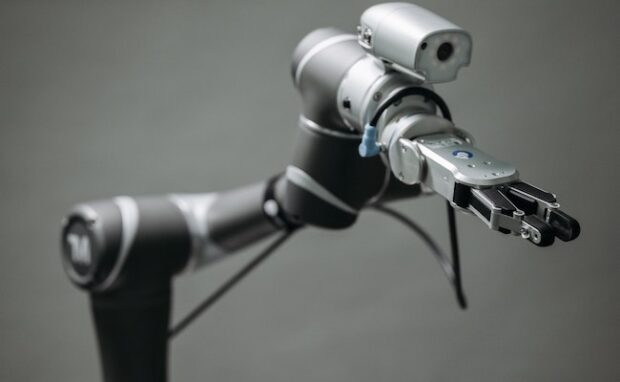Robots are transforming medical education
University of California, San Francisco, is training the new generation of surgeons with its Da Vinci Surgical System. Hence, some of the new healthcare professionals call themselves robot surgeons. Moreover, the university has been adding robotics courses to the surgery curriculum. As a result, the medical field continues to improve with technology.
Hearing “robot surgeon” probably made you think of a machine performing critical procedures themselves. Contrary to popular belief, such machines are only tools that make doctors more efficient and effective than ever. Soon, a robot or an AI program could aid in your next check-up or surgery. That is why everyone should learn how they work.
This article will discuss the University of California’s medical robots for surgery. Later, I will cover another healthcare bot and a method of teaching medical students.
How do the medical robots work?
Wired reported on the Da Vinci Surgical System and the people who tested it. Alyssa Murillo was one of them, a fourth-year general surgery resident at UC San Francisco.
Most students expect to see surgery demonstrations. However, Murillo saw one of the university’s medical robots instead: the Da Vinci Surgical System.
It gave her an in-depth view inside a patient’s body through the robot’s video console. “It was incredible. You have a full 3D view, which is different from any other minimally invasive surgery technique.”
Wired described the Da Vinci as an 8-foot-tall robot with four surgical arms. It inserts “straws” into a surgical site and passes minuscule instruments in and out of them.
Its arms hold a camera while its console enables a surgeon to move the robot like a “crane operator.” Meanwhile, the medical robot mimics the surgeon’s every move while allowing for wrist control.
As a result, doctors gain more maneuverability than in traditional laparoscopic surgery. The Da Vinci System also dispels the assumption that medical robots will take over doctor’s jobs.
You may also like: How AI agriculture changes food production
It has a lead surgeon controlling its arms while another medical professional is a bedside assistant. The latter sets up, inserts, and removes instruments from the patient.
The “straws” give the head surgeon a left and right perspective while looking through the console, enabling a clear 3D picture. Nowadays, more doctors are using robots for surgeries.
The National Library of Medicine said, “The use of robotic surgery for all general surgery procedures increased from 1.8% to 15.1% from 2012 to 2018.” Also, medical education is rapidly evolving.
How are robots changing medical education?
Alisa Coker, director of surgery education at Johns Hopkins, calls herself a “robotic surgeon.” Wired says she conducts 98% of her surgeries with the Da Vinci Surgical System.
“Some residency programs didn’t see the benefit of teaching their surgery residents robotics. But over the last six years, residents started demanding to be taught robotics,” she said.
“They were asking that we prepare a curriculum to teach them,” Coker added. Nowadays, her intern class undergoes a “boot camp” for robotic surgery.
The first-year students use robotic simulators to complete games and tasks to learn important robotic surgery skills. Meanwhile, Coker uses an app to monitor her students’ simulator use.
You may also like: Google medical chatbot under hospital testing
Murillo says the simulators are “a little more like video games,” so she wonders if video game enthusiasts may have an advantage in controlling medical robots. Also, Case Western Reserve University’s School of Medicine is using virtual reality for medical education.
It partnered with Microsoft to enable students to examine the human body with VR headsets. As a result, the college became the first to remove corpses from its anatomy courses.
The headgear lets students work at the macro and microscopic level for detailed anatomical education. They can check each part and then zoom in to look at finer details. Consequently, the university merges anatomy and histology into one course.
Conclusion
Medical robots are changing how people train to become doctors. Modern procedures involve these machines, so seeing students learning about robots is unsurprising.
Fortunately, robots remain as tools for human professionals, not substitutes. These cold, unfeeling machines are under control by warm, empathetic healthcare providers.
As a result, healthcare improves for everyone worldwide. However, robots aren’t the only ones shifting the medical field. Learn more about these trends and more at Inquirer Tech.

